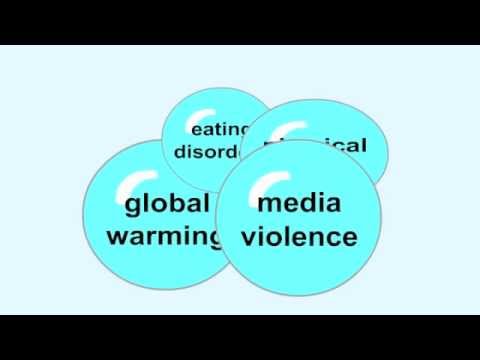8.1: Developing a Research Question
- Page ID
- 20065
“I write out of ignorance. I write about the things I don’t have any resolutions for, and when I’m finished, I think I know a little bit more about it. I don’t write out of what I know. It’s what I don’t know that stimulates me.”– Toni Morrison, author and Northeast Ohio native
Think of a research paper as an opportunity to deepen (or create!) knowledge about a topic that matters to you. Just as Toni Morrison states that she is stimulated by what she doesn’t yet know, a research paper assignment can be interesting and meaningful if it allows you to explore what you don’t know.
Research, at its best, is an act of knowledge creation, not just an extended book report. This knowledge creation is the essence of any great educational experience. Instead of being lectured at, you get to design the learning project that will ultimately result in you experiencing and then expressing your own intellectual growth. You get to read what you choose, and you get to become an expert on your topic.
That sounds, perhaps, like a lofty goal. But by spending some quality time brainstorming, reading, thinking or otherwise tuning into what matters to you, you can end up with a workable research topic that will lead you on an enjoyable research journey.
The best research topics are meaningful to you
- Choose a topic that you want to understand better.
- Choose a topic that you want to read about and devote time to
- Choose a topic that is perhaps a bit out of your comfort zone
- Choose a topic that allows you to understand others’ opinions and how those opinions are shaped.
- Choose something that is relevant to you, personally or professionally.
- Do not choose a topic because you think it will be “easy” – those can end up being even quite challenging
The video below offers ideas on choosing not only a topic that you are drawn to, but a topic that is realistic and manageable for a college writing class.
Brainstorming Ideas for a Research Topic
Which question(s) below interest you? Which question(s) below spark a desire to respond? A good topic is one that moves you to think, to do, to want to know more, to want to say more.
There are many ways to come up with a good topic. The best thing to do is to give yourself time to think about what you really want to commit days and weeks to reading, thinking, researching, more reading, writing, more researching, reading and writing on.
- What news stories do you often see, but want to know more about?
- What (socio-political) argument do you often have with others that you would love to work on strengthening?
- What would you love to become an expert on?
- What are you passionate about?
- What are you scared of?
- What problem in the world needs to be solved?
- What are the key controversies or current debates in the field of work that you want to go into?
- What is a problem that you see at work that needs to be better publicized or understood?
- What is the biggest issue facing [specific group of people: by age, by race, by gender, by ethnicity, by nationality, by geography, by economic standing? choose a group]
- If you could interview anyone in the world, who would it be? Can identifying that person lead you to a research topic that would be meaningful to you?
- What area/landmark/piece of history in your home community are you interested in?
- What in the world makes you angry?
- What global problem do you want to better understand?
- What local problem do you want to better understand?
- Is there some element of the career that you would like to have one day that you want to better understand?
- Consider researching the significance of a song, or an artist, or a musician, or a novel/film/short story/comic, or an art form on some aspect of the broader culture.
- Think about something that has happened to (or is happening to) a friend or family member. Do you want to know more about this?
- The New York Times’ segment “Room for Debate” has many compelling and current questions, along with commentary from a variety of perspectives. Choose one of these questions to pursue?
- Go to a news source (New York Times, Wall Street Journal, Christian Science Monitor, etc) and skim the titles of news stories. Does any story interest you?
From Topic to Research Question
Once you have decided on a research topic, an area for academic exploration that matters to you, it is time to start thinking about what you want to learn about that topic.
The goal of college level research assignments is never going to be to simply “go find sources” on your topic. Instead, think of sources as helping you to answer a research question or a series of research questions about your topic. These should not be simple questions with simple answers, but rather complex questions about which there is no easy or obvious answer.
A compelling research question is one that may involve controversy, or may have a variety of answers, or may not have any single, clear answer. All of that is okay and even desirable. If the answer is an easy and obvious one, then there is little need for argument or research.
Make sure that your research question is clear, specific, researchable and limited (but not too limited). Most of all, make sure that you are curious about your own research question. If it does not matter to you, researching it will feel incredibly boring and tedious.
The video below includes a deeper explanation of what a good research question is as well as examples of strong research questions:



